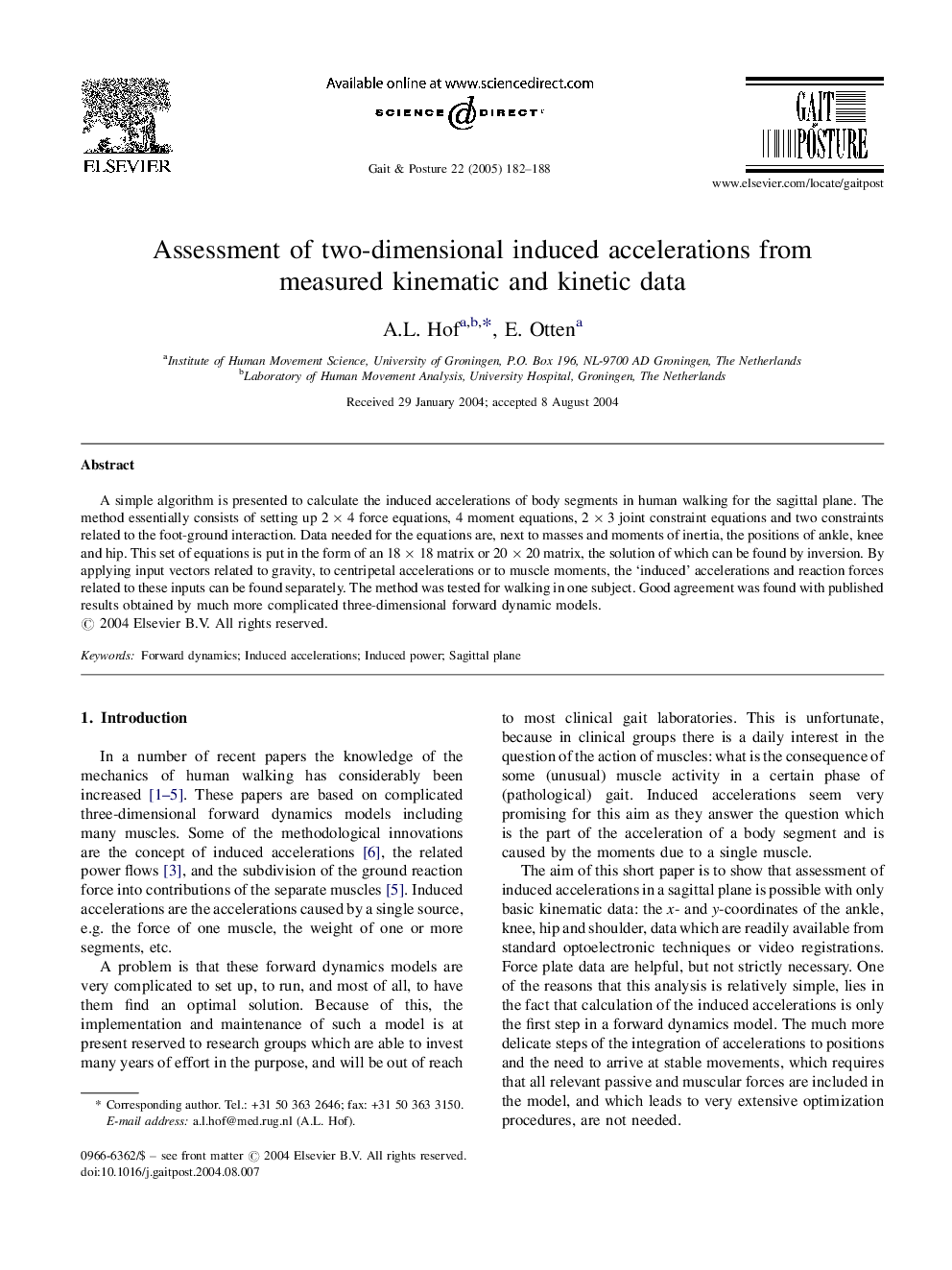| Article ID | Journal | Published Year | Pages | File Type |
|---|---|---|---|---|
| 9352763 | Gait & Posture | 2005 | 7 Pages |
Abstract
A simple algorithm is presented to calculate the induced accelerations of body segments in human walking for the sagittal plane. The method essentially consists of setting up 2Â ÃÂ 4 force equations, 4 moment equations, 2Â ÃÂ 3 joint constraint equations and two constraints related to the foot-ground interaction. Data needed for the equations are, next to masses and moments of inertia, the positions of ankle, knee and hip. This set of equations is put in the form of an 18Â ÃÂ 18 matrix or 20Â ÃÂ 20 matrix, the solution of which can be found by inversion. By applying input vectors related to gravity, to centripetal accelerations or to muscle moments, the 'induced' accelerations and reaction forces related to these inputs can be found separately. The method was tested for walking in one subject. Good agreement was found with published results obtained by much more complicated three-dimensional forward dynamic models.
Related Topics
Health Sciences
Medicine and Dentistry
Orthopedics, Sports Medicine and Rehabilitation
Authors
A.L. Hof, E. Otten,
